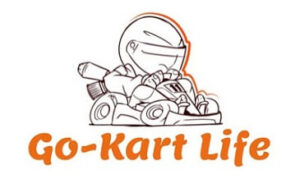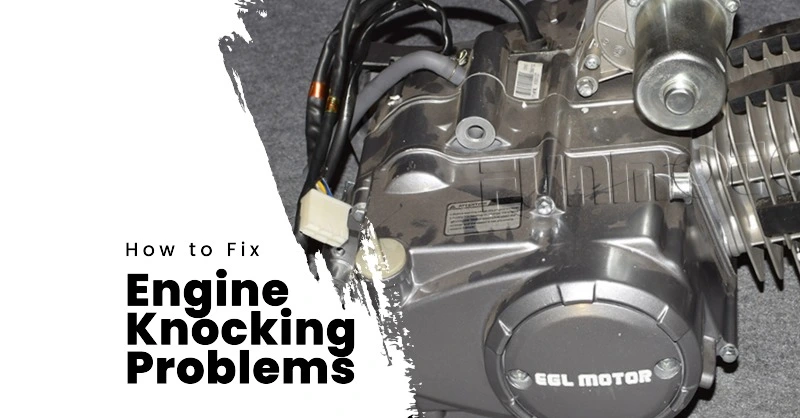Engine-knocking problems can bring your go-kart experience to a screeching halt. To help you get back on track, this guide covers everything you need to know about diagnosing and fixing engine-knocking issues.
| Key Takeaways |
|---|
| Engine knocking in go-karts can be caused by detonation, pre-ignition, or mechanical issues such as worn rod bearings or piston skirts. |
| To fix detonation and pre-ignition issues, use high-quality fuel with the proper octane rating, ensure ignition timing is set correctly, and inspect spark plugs for wear and damage. |
| For mechanical issues, replace worn or damaged rod bearings and inspect piston skirts for wear, replacing them if necessary. |
| Prevent engine knocking by using high-quality fuel, performing regular maintenance, and upgrading the engine if necessary. |
| Additional tips for a knock-free go-karting experience include ensuring the cooling system functions properly, keeping the air filter clean and unrestricted, and maintaining the fuel system. |
| Regular maintenance and preventive measures can help avoid engine knocking, prolonging your go-kart's lifespan and enhancing its performance. |
Diagnosing the Cause of Engine Knocking
Identifying the root cause of engine knocking is crucial to fixing the problem. There are several possible reasons for engine knocking, including:
Detonation
Detonation, also known as engine knock or knock, occurs when the mixture of air and fuel in the combustion chamber ignites too early, causing pressure waves that produce a knocking sound. Detonation can lead to severe engine damage, including cracked or damaged pistons and damaged cylinder walls. To learn more about detonation and how it affects go-kart engines, check out this guide on go-kart horsepower.
Pre-ignition
Pre-ignition is when the air-fuel mixture ignites before the spark plug fires, creating a similar issue to detonation. This abnormal combustion event can lead to power loss, increased engine temperatures, and possible engine damage. It is often caused by hot spots in the combustion chamber or an excessively lean air-fuel mixture. For more information on pre-ignition and other go-kart-related issues, read this article on troubleshooting a go-kart.
Mechanical Issues
Loose or worn parts within the engine can lead to knocking sounds. Common mechanical issues include worn rod bearings or piston skirts. To address these issues, you might need to replace the faulty parts or adjust the components to ensure a smooth-running engine.
Once you have identified the root cause of the engine knocking, you can proceed with the appropriate solution. You can find various resources and tips on Go Kart Life to help you diagnose, fix, and maintain your go-kart for an enjoyable and safe riding experience.
Detonation and Pre-ignition Solutions
To address detonation and pre-ignition issues, consider these solutions:
Fuel Quality
Low-octane fuel can result in engine knocking. Switch to a higher-octane fuel or use an octane booster to mitigate this issue. Optimal performance is achievable with the best go-kart engines.
Ignition Timing
Ensure the ignition timing is set according to the manufacturer’s specifications. Incorrect timing can cause knocking due to the air-fuel mixture igniting too early or late.
Spark Plug Inspection
Damaged or worn spark plugs can lead to pre-ignition. Examine the spark plugs for signs of wear, replacing them if needed. Consistent go-kart maintenance ensures a smooth-running engine. Find helpful tips in this guide on maintaining a go-kart.
Mechanical Issues Solutions
If knocking persists after addressing fuel and ignition problems, inspect the engine for loose or worn components:
Rod Bearings
Worn or damaged rod bearings can cause knocking sounds. Replace the bearings if any issues are found to prevent further damage. To learn more about rod bearings and other engine components, visit this article on how go-karts work.
Piston Skirts
Worn piston skirts can lead to knocking. Inspect for wear and replace if necessary. Read this guide on go-kart troubleshooting for more information on piston skirts and other common go-kart issues.
If you’re uncertain about inspecting or replacing engine parts, seek assistance from a professional mechanic or a reputable go-kart repair shop to ensure the job is done correctly and safely.
If you’re uncertain about inspecting or replacing engine parts, seek assistance from a professional go-kart repair shop.
Preventing Engine Knocking Issues
Taking preventive measures helps avoid engine-knocking problems, ensuring a smoother and safer go-karting experience. Here are some tips to prevent engine-knocking issues:
High-Quality Fuel
Use fuel with the proper octane rating for your engine to prevent detonation and pre-ignition issues. Higher octane fuels are less prone to pre-ignition and can provide better performance. Check your go-kart’s owner’s manual for the recommended octane rating. To learn more about fuel requirements and go-kart performance, read this article on go-kart horsepower.
Regular Maintenance
Inspect and maintain your go-kart routinely, adhering to the manufacturer’s guidelines. This helps identify and resolve potential problems early, prolonging your go-kart’s lifespan and enhancing its performance. Find valuable tips and tricks in this article on maintaining a go-kart.
Engine Upgrade
If engine knocking issues persist, consider upgrading your engine. Explore high-performance options like Alphaworks engines. Upgrading your engine can improve performance, reliability, and a more enjoyable go-karting experience.
Pro Tips for a Knock-Free Go-Karting Experience
Cooling System
Ensure your go-kart’s cooling system is functioning correctly to prevent overheating, which can cause engine knocking. Regularly inspect the radiator, hoses, and coolant levels. An efficient cooling system can help prevent engine damage and enhance overall performance.
Air Intake
Keep the air filter clean and unrestricted to prevent debris from entering the combustion chamber, which may contribute to knocking. Regularly inspect and clean or replace the air filter according to the manufacturer’s recommendations.
Fuel System
Inspect and maintain the fuel system, including the carburetor, fuel lines, and fuel filter. A clean and well-functioning fuel system helps avoid engine-knocking issues. To ensure your fuel system is in top condition, refer to this guide on cleaning a go-kart carburetor and this article on go-kart carburetor adjustment. Proper fuel system maintenance can significantly improve your go-kart’s performance and reduce the risk of engine knocking.
Related Article: How to Put a Belt on a Go-Kart
Conclusion
Engine knocking is a common issue that can impact your go-kart’s performance and overall experience. By diagnosing the root cause and implementing the appropriate solutions, you can quickly fix the problem and get back on track. Prioritizing regular maintenance and preventive measures will help you enjoy a knock-free go-karting experience for years.
Remember, maintaining your go-kart involves taking care of the engine and other essential components, such as the braking system, clutch, and tires. Investing in the right safety gear and keeping it in good condition is crucial for a safe and enjoyable go-karting experience.
Whether you’re a casual go-kart driver or have aspirations of becoming a race car driver, taking care of your go-kart and its engine will ensure a smooth and thrilling ride. With the proper care, you’ll be able to make the most out of your time on the best go-kart tracks and create lasting memories.

Goran, an experienced go-kart racer, fuels GoKartLife.com with his passion and expertise. He offers valuable insights and tips for fellow enthusiasts, fostering the growth of the go-kart community. Join Goran at GoKartLife.com and immerse yourself in this exhilarating sport.

